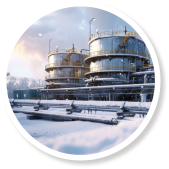https://doi.org/10.15255/KUI.2004.024
Published: Kem. Ind. 54 (5) (2005) 241–254
Paper reference number: KUI-24/2004
Paper type: Professional paper
Download paper:  PDF
PDF

Application of the Methodology of Chemical Engineering on Development of Bioprocesses
B. Zelić and Ð. Vasić-Rački
Abstract
Environmental protection and pollution control, together with economic and social aspects, play the key role in evaluation sustainability. The development of eco-efficient products and processes is crucial for a sustainable development. An ecological and economic evaluation from the very beginning of the product/process design is therefore a matter of prime importance. In the early stages of product/process design, the evaluation procedure has to deal with a lack of knowledge, but at the same time it has to deliver sound results in a relatively short time period. It is possible to overcome that contradiction by using extensive, but nowadays time-efficient, modeling and simulation methods. Modeling, simulation and optimization enable the taking of maximal advantage of the experimental data. Chemical engineering methodology that includes modeling, simulation and optimization of processes, and process parameters, is shown on the two examples: the process of bioconversion of glucose to pyruvate using genetically modified Escherichia coli strain, and the process of bioconversion of glucose to 2,5-diketo-D-gluconic (2,5-DKG) using Erwinia citreus. Optimization of process parameters was studied in detail using two different optimization techniques: genetic algorithms (GA) and evolutionary operation (EVOP). Both techniques are based on the principle of the evolution applied on the estimation of possible solutions – process optimums. The evolutionary operation was used to determine optimal operating conditions, namely pH and temperature for the process of bioconversion of glucose to 2,5-DKG. For this purpose, a two-level factorial experimental design with central point was used. Optimization using GA was applied to investigate the influence of the mass fractions of PEG-6000, the mass fraction of ammonium sulfate, pH and BS Albumine (BSA) concentration on partition coefficient of BSA in an aqueous two-phase system, consisting of PEG-6000 and ammonium sulfate. In comparison to the full experimental plan, which would require 1530 experiments, the process optimum using GA was achieved in twenty experiments only. Modeling studies were performed to identify simple, easy to use, and robust models that are suitable to support the engineering tasks of process optimization and design. For this purpose, “black box” unstructured cell models were chosen because they provide significant simplicity and at the same time a general understanding of the dominant metabolic processes in the production strain. Although these types of models require very rigorous constrains, they nevertheless showed their applicability and suitability for a variety of different modeling tasks. Basic principle used for the development of the unstructured cell model was shown also by two examples, for 2,5-DKG and for pyruvate production process. Finally, the pyruvate production process with in situ product recovery with fully integrated electrodialysis was shown as an illustration of eco-efficient process development. Use of mass balances and economic calculations during the early stages of process development was also shown for pyruvate production process.

This work is licensed under a Creative Commons Attribution 4.0 International License
Keywords
chemical engineering methodology in bioprocess development, bioprocess development, simulation of the distillation process, optimisation, ecological/economical bioprocess evaluation









